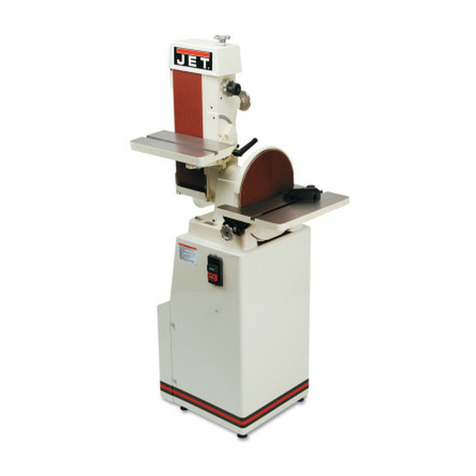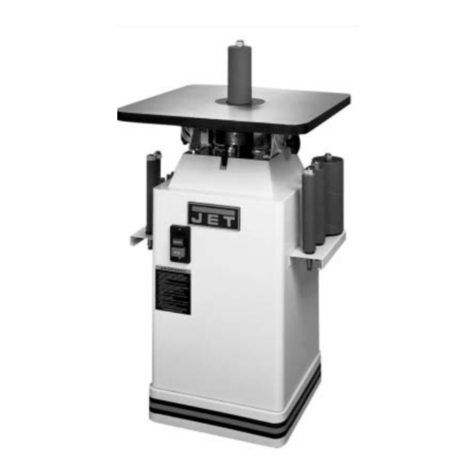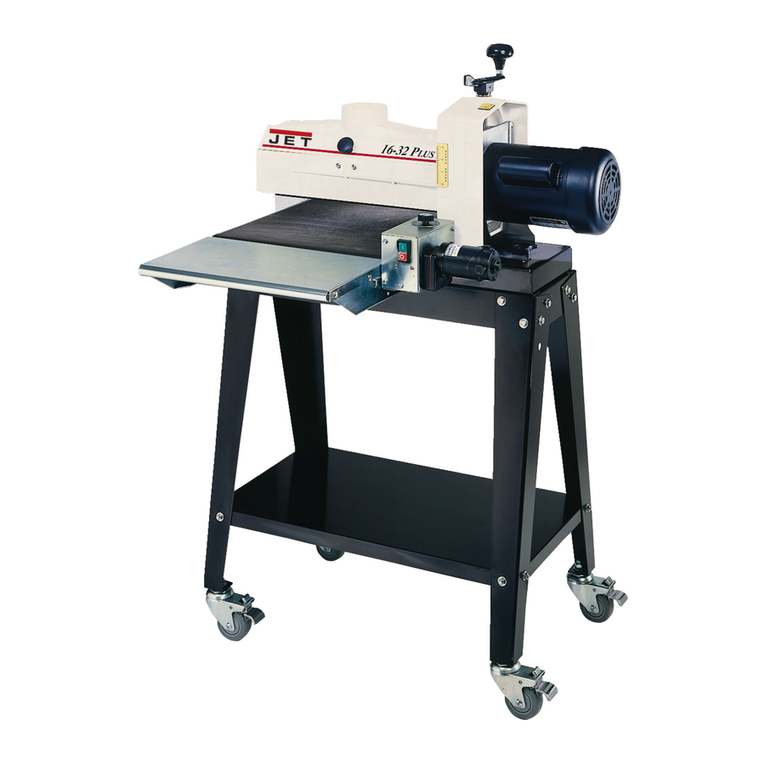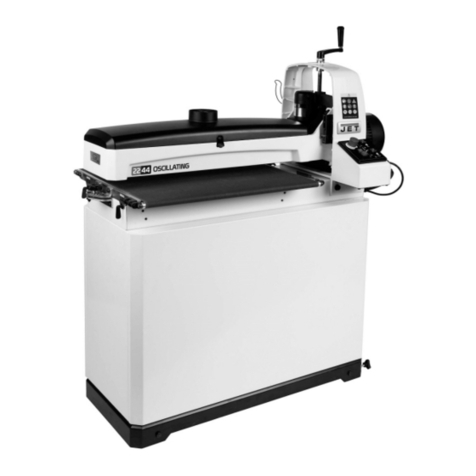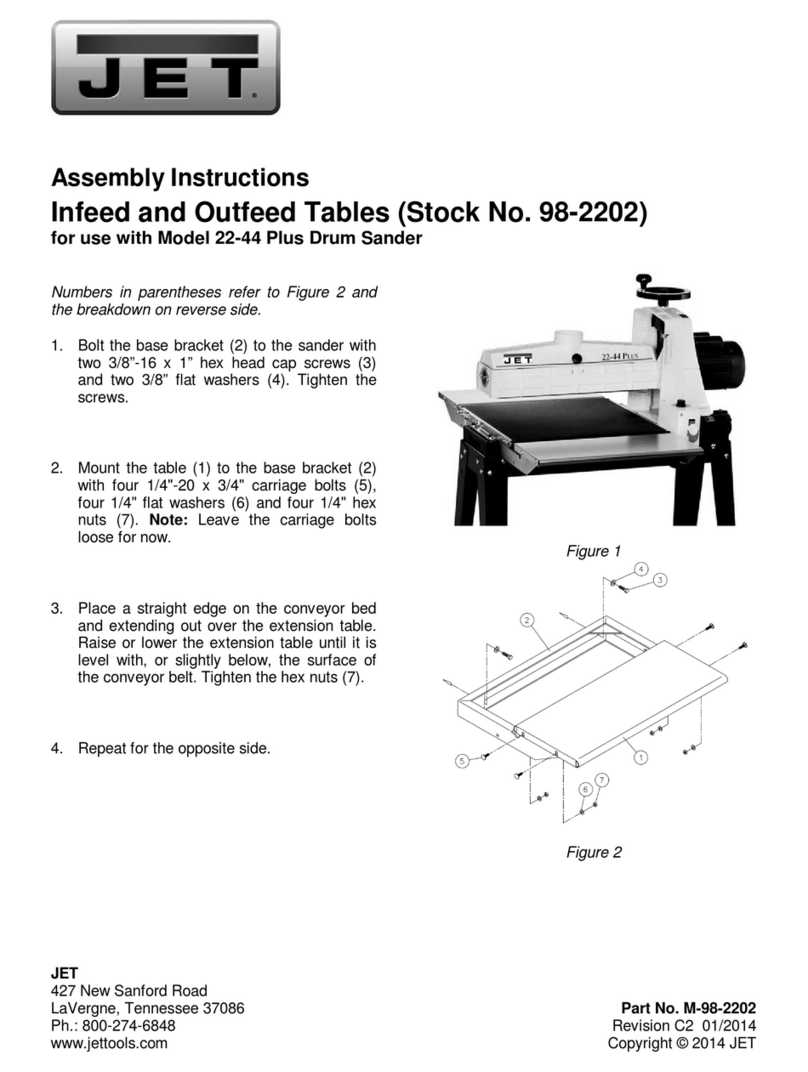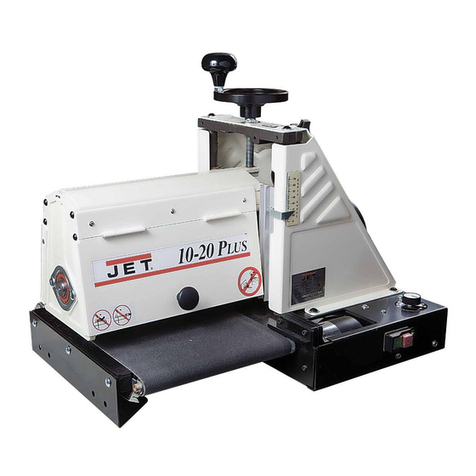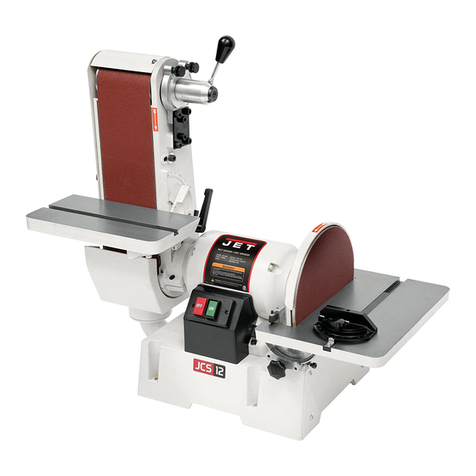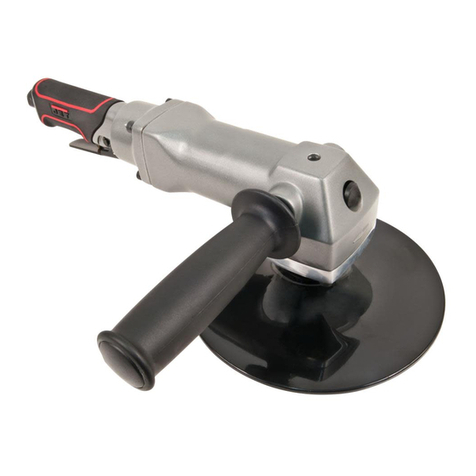
and humidity, and pass it over to the
new owner if you part with the tool.
No changes to the machine may be
made.
Daily inspect the function and
existence of the safety appliances
before you start the machine.
Do not attempt operation in this case,
protect the machine by unplugging the
mains cord.
Remove all loose clothing and confine
long hair.
Before operating the machine, remove
tie, rings, watches, other jewellery, and
roll up sleeves above the elbows.
Wear safety shoes; never wear leisure
shoes or sandals.
Always wear the approved working
outfit.
Do not wear gloves.
Install the machine so that there is
sufficient space for safe operation and
workpiece handling.
Keep work area well lighted.
The machine is designed to operate in
closed rooms and must be placed
stable on firm and levelled table
surface.
Make sure that the power cord does
not impede work and cause people to
trip.
Keep the floor around the machine
clean and free of scrap material, oil
and grease.
Stay alert!
Give your work undivided attention.
Use common sense. Do not operate
the machine when you are tired.
Do not operate the machine under the
influence of drugs, alcohol or any
medication. Be aware that medication
can change your behaviour.
Never reach into the machine while it
is operating or running down.
Never leave a running machine
unattended. Before you leave the
workplace switch off the machine.
Keep children and visitors a safe
distance from the work area.
Do not operate the electric tool near
inflammable liquids or gases.
Observe the fire fighting and fire alert
options, for example the fire
extinguisher operation and place.
Do not use the machine in a dump
environment and do not expose it to
rain.
Wood dust is explosive and can also
represent a risk to health.
Dust form some tropical woods in
particular, and from hardwoods like
beach and oak, is classified as a
carcinogenic substance.
Always use a suitable dust extraction
device
Before machining, remove any nails
and other foreign bodies from the
workpiece.
Never operate with the table insert not
in place.
Make sure to guide and hold the
workpiece thigh during machining.
Machine only stock which rests
securely on the table.
Specifications regarding the maximum
or minimum size of the workpiece
must be observed.
Do not remove chips and workpiece
parts until the machine is at a
standstill.
Do not stand on the machine.
Connection and repair work on the
electrical installation may be carried
out by a qualified electrician only.
Have a damaged or worn power cord
replaced immediately.
Replace any torn or worn sanding disc
immediately.
Make all machine adjustments or
maintenance with the machine
unplugged from the power source.
3.3 Remaining hazards
When using the machine according to
regulations some remaining hazards
may still exist.
The moving sanding disc can cause
injury.
Risk of kickback. The workpiece is
caught by the moving sanding disc
and thrown back to the operator.
Thrown workpiece parts can lead to
injury.
Sanding dust and noise can behealth
hazards. Be sure to wear personal
protection gear such as safety goggles
and dust mask. Use a suitable dust
exhaust system.
Defective sanding discs can cause
injuries.
The use of incorrect mains supply or a
damaged power cord can lead to
injuries caused by electricity.
4. Machine specifications
4.1 Technical data
Sanding disc diameter 305mm
Table size (WxL) 250x415mm
Table tilt -15° - 45
Disc speed 1400 rpm
(Table height above floor 890mm)
Dust port diameter 100mm
Overall (LxWxH) 533x650x533mm
Net weight 54 kg
Mains 230V ~1/N/PE 50Hz
Output power 0,75 kW (1HP) S1
Reference current 6 A
Extension cord (H07RN-F): 3x1,5²
Installation fuse protection 10A
4.2 Noise emission
Acoustic pressure level (EN 11202):
Idling 71,9 dB (A)
In operation 84,1 dB (A)
The specified values are emission
levels and are not necessarily to be
seen as safe operating levels.
As workplace conditions vary, this
information is intended to allow the
user to make a better estimation of the
hazards and risks involved only.
4.3 Content of delivery
Sanding table
Dust collection port
Sanding disc 60 grit
Mitre gauge
Circular sanding point
Filler bar
Operating tools
Assembly kit
Operating manual
Spare parts list.
5. Transport and start up
5.1 Transport and installation
The machine is designed to operate in
closed rooms and must bebolted on a
firm and levelled table surface or on
the originalJet stand (optional
accessory).
For packing reasons the machine is
not completelyassembled.
5.2 Assembly
If you notice transport damage while
unpacking, notify your supplier
immediately. Do not operate the
machine!



